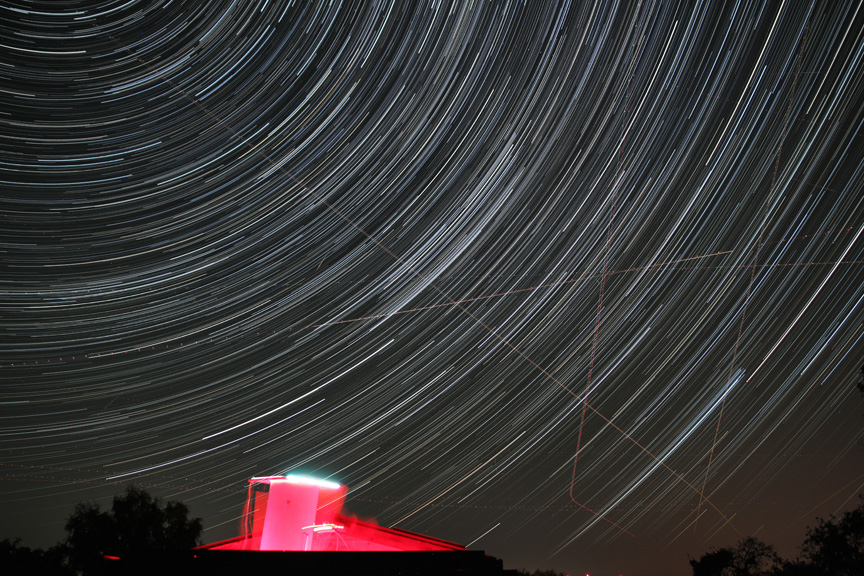

|
| Objekt / Object: |
Jedes Jahr um den 12./13. August kann man den Sternschnuppenstrom der Perseiden beobachten.
Zu dieser Zeit durchquert die Erde auf ihrer Bahn um die Sonne die Staubspur des Kometen 109P/Swift-Tuttle.
Diese Staubteilchen verglühen dann in der Erdatmosphäre und können als Sternschnuppen beobachtet werden.
Der Name Perseiden kommt daher, daß die Sternschnuppen scheinbar aus dem Sternbild Perseus zu kommen scheinen. Das Bild oben ist eine Kombination von 185 Bildern über einen Zeiraum von knapp 2 Stunden. Das Video unten zeigt den Himmel in Richtung Nordosten mit dem Sternbild Perseus, das sich aus der Bildmitte langsam nach oben rechts bewegt. Es zeigt allerdings nur wenige Perseiden, die kurz aufleuchten. Es zeigt jedoch eindrucksvoll die Dichte des Flugverkehrs. Im Vordergrund befindet sich meine Sternwarte.
Every year around 12./13. August we can observe the meteor shower of the Perseids.
At this time of the year earth at it's orbit around the sun crosses the stream of dust and debris produced by the comet 109P/Swift-Tuttle.
These dust particles burn in earth's atmosphere and can be seen as a meteor shower.
|
| Objektentfernung / Objectdistance: | - |
| Datum / Date: | 12.08.2015 |
| Zeit / Time: | ca. 22:00 - 00:00 UT, 185 x 30s |
| Ort / Location: | Wilsenroth / Westerwald |
| Instrument: |
Sigma Zoom-Objektiv bei 17mm, Blende 3.2
Sigma zoom lens at 17mm @ f/3.2 |
| Montierung / Mount: |
Feststehendes Stativ
Fixed tripod |
| Kamera: | Canon EOS 600D, ISO 800 |
| Nachführung / Guiding: | - |
| Filter: | - |
| Bemerkung / Note: | - |